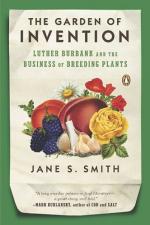|
This section contains 349 words (approx. 2 pages at 300 words per page) |
World of Scientific Discovery on Luther Burbank
Luther Burbank developed an early interest in gardening, one which he continued to explore throughout his life. The thirteenth of fifteen children, he had only the equivalent of a high school education but his natural botanical talents more than made up for his lack of a formal education.
As a youngster, Burbank worked continuously to understand the details of plant breeding. He paid attention to the small differences between plants, gaining knowledge which he later used to perform advanced techniques such as hybridization and grafting.
At age twenty-one, he purchased land in Massachusetts where he began his botanical work. His first accomplishment (which took less than a year) was the development a new variety of high-yield potato seedling--the Burbank potato. Five years later, he moved to California and using money he earned selling rights to the famous potato, he settled near Santa Rosa.
While his potato was spreading in popularity and geography, Burbank continued to develop new varieties of fruit, including at least sixty varieties of plums and ten new commercial varieties of berry. He also worked on nuts (including almonds and walnuts), as well as flowers (the fire poppy, the Burbank rose, the Shasta daisy, and the ostrich-plume clematis).
Throughout his career, he shaped his own ideas on plant breeding and genetics. After reading Charles Darwin's works, Burbank became aware of the importance of variation, or allowing for differences in traits of a particular species so the strain retains survival characteristics--such as the ability to resist disease.
While different theories relative to genetic determination began to take shape, Burbank supported the theory of inheritance of acquired characteristics, which held that plants passed on their traits from parent plants, independent of genetic activity.
The genetic theory eventually emerged as the more accurate and accepted of the two, but circumstances did not provide the most conducive testing grounds. Burbank himself worked with plants whose form and structure are less uniform and more changeable than animals. In addition, in noting his observations of variety differences, Burbank felt he was almost creating the changes himself by suitably adjusting the environment.
|
This section contains 349 words (approx. 2 pages at 300 words per page) |


